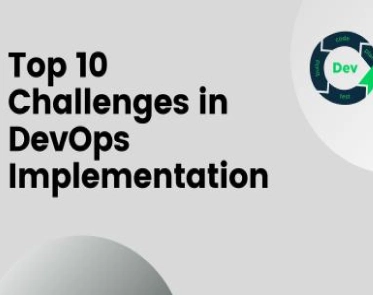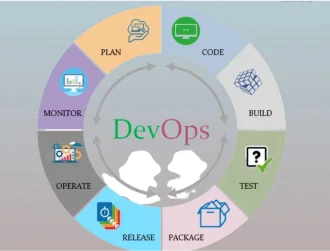Full Stack Development is a revolutionary approach in the modern technological landscape, allowing firms to develop highly adaptable and user-friendly digital solutions. Microservices are key to modern software development strategies. They offer a modular approach that is pivotal in managing complex applications, ensuring scalability in microservices, and maintaining robustness across diverse development scenarios.
Integrating microservices architecture in the development process is undoubtedly a significant boost. This guide highlights the microservices architecture benefits, particularly their role in enhancing scalability, agility, and overall efficiency in full stack development. In this blog post, we address the critical question of ‘What is the importance of microservices in Full Stack Development?’ and many more. Let’s dive in!
What does “Full Stack” mean to developers?
In the context of developing websites and other forms of software for use online, the term “full stack development” refers to the practice of using both front-end and back-end systems.
A full stack developer’s responsibilities include developing and maintaining both front- and back-end software. This holistic method promotes open lines of communication among team members throughout the project’s lifecycle, which might result in fewer iterations and more stable outcomes.
Microservices architecture components
- Service components
Microservice architecture places major emphasis on the full stack development with microservices. These may represent individual components, like those of an application. User identification, managing product catalogs, and processing orders are all examples of services that may be treated independently.
- Independence
Independent operation is a defining characteristic of microservices. Each service has its distinct lifetime in terms of development, distribution, and scalability. The split allows for faster development and rolling out changes without affecting the complete system.
- APIs
Microservices communicate with one another and external customers using APIs (application programming interfaces). These APIs communicate between services and are often accessible via HTTP/HTTPS, RESTful endpoints, or GraphQL queries.
- Database per service
It is usual practice for each microservice to have its database in order to preserve the loose connectivity between them. To function properly, multiple microservices may have varying database needs.
- Containerization
Microservices are often implemented in containers, such as Docker containers, to simplify management and delivery. Containerization allows for increased scalability and easier deployment since each service may operate in its dedicated container.
- Orchestration
Orchestration systems like Kubernetes make it easier to manage and deploy containers. The scalability, load balancing, and discovery of microservices in software development are all taken care of automatically.
- Load balancers
Microservices may use load balancers to improve availability and performance by spreading incoming traffic across many running instances. The service level and the API gateway are the two major places where load balancing may be implemented.
- Security
To be safe, there must be well-specified internal service and external client access control procedures for scalability in microservice architecture.
- CI/CD
Thanks to CI/CD best practices, all new and updated code is instantly integrated, compiled, and released to production with zero downtime.
- Fault Tolerance
Failures are anticipated and planned for in microservice designs. Retries, circuit breakers, and fallback systems are all examples of methods that may be used to increase resilience.
What are the key benefits of using microservices in full stack development?
In today’s fast-paced, tech-driven world, improvising dynamically is crucial. For the completion of any project, regardless of its complexity, the ability to swiftly switch between multiple technologies is essential. Full stack developers are experts in many languages, frameworks, and other development resources, which helps them achieve significant agility and spotless execution.
Some of the microservices architecture benefits include:
- Companies may be able to avoid hiring two developers if they can find one skilled in both front-end and back-end development.
- Time to market and development cycles may be shortened because we may influence development at several stages.
- Full stack developers enable the production of more cohesive and integrated apps by easing communication between the frontend and backend teams.
- The developers are well-versed in all facets of the software they work on since they are responsible for it from its inception to its completion.
- Full stack developers can see the big picture when it comes to their application’s architecture, which aids in problem isolation and performance optimization.
What is the importance of microservices in full-stack development?
When a project has to handle several languages, scale, and be adaptable, a microservice architecture is the way to go. The following are examples of full stack development advantages and their importance:
- User login applications first need authentication and permission. Such systems are best implemented in several languages using a microservices design. Since they may be built using any language, microservices are easier to integrate and operate more smoothly.
- To accommodate a huge user base and process complicated transactions, an e-commerce platform’s backend must be reliable and scalable. Payment processing, shopping cart functionality, and inventory management are examples of how microservices may be leveraged to employ multiple technologies for specialized objectives. This simplifies website administration, guarantees uninterrupted service, and enhances the user experience.
- Chatbots are increasingly being used to do mundane activities and communicate with clients. Since each microservice may be written in a different language, they are ideal for creating chatbot services. This method makes scaling, integrating services, and improving overall performance easier.
- Processing pictures is often a tedious and computationally intensive procedure. Microservice designs offer the decoupling of processing activities into reusable modules that may be written in any language. The benefits of this method include better performance, scalability, and a decreased maintenance burden.
- The Internet of Things creates massive amounts of data from many different sources. Microservices, which may divide data into smaller, more manageable pieces, may aid with administering this information.
Conclusion
As the business expands, more and more possibilities will arise for full stack developers. Cross-platform creative abilities are in high demand as firms transform to meet the needs of the ever-changing digital market.
Full stack engineers are uniquely positioned to influence the future of web development with their creativity, flexibility, technical savvy, openness to change, and desire to push the edge.









